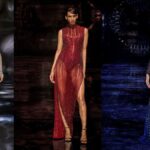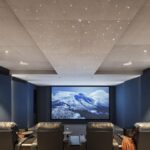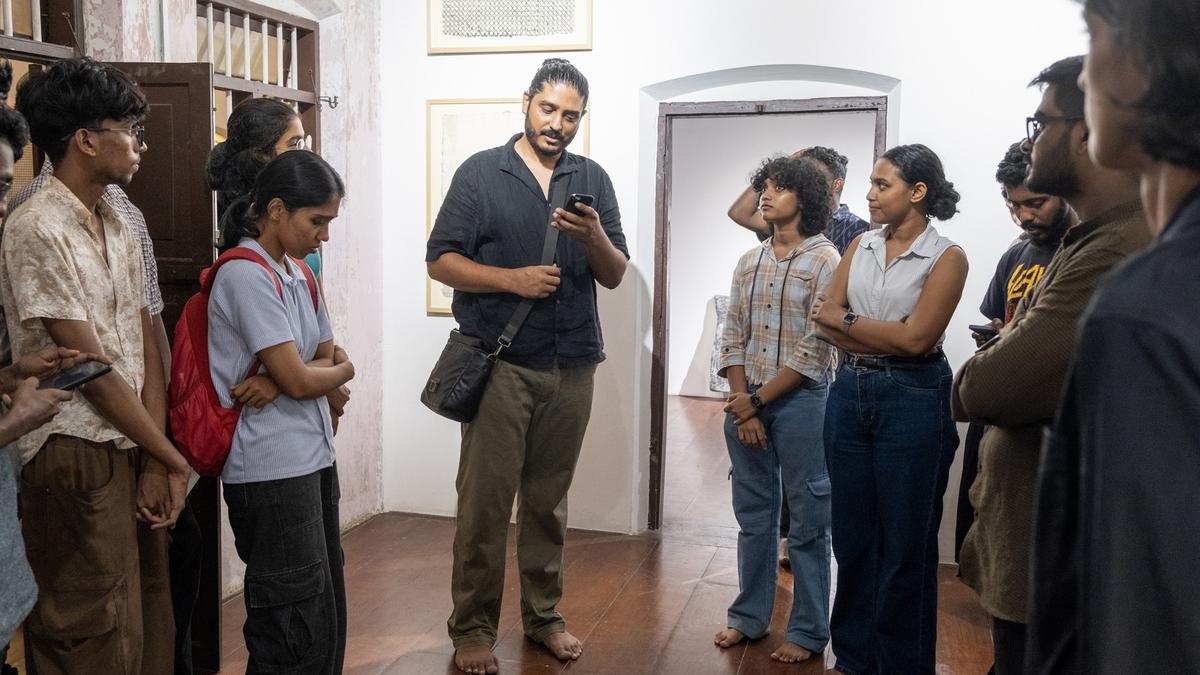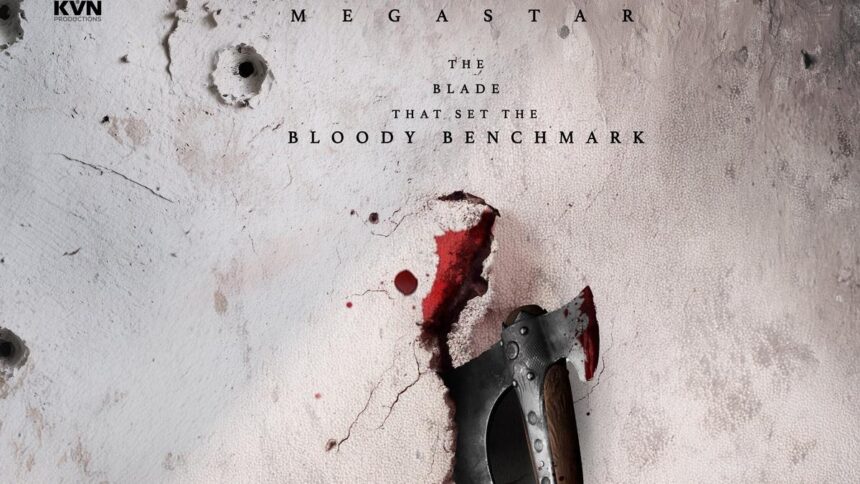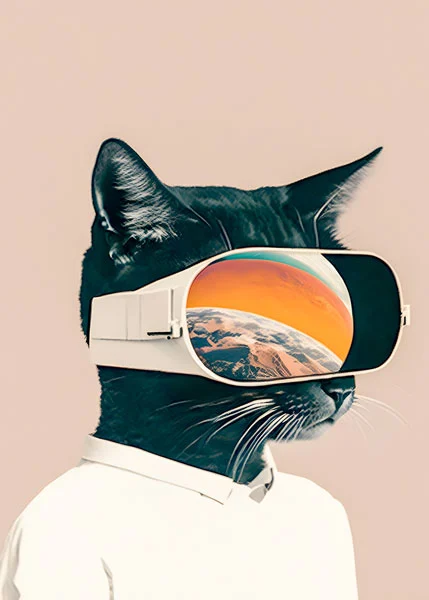Bangladeshi artist couple Ayesha Sultana and Nabil Rahman stayed at an old house at Kesavadasapuram in Thiruvananthapuram for seven weeks for an art residency programme. During that time they discovered possessions left behind by the former residents of the house. The couple, deeply impacted by these objects, decided to pay homage to their stay in the city with an art exhibition, with works prepared with materials found at the house.

This is the story behind Footnotes, currently on at Neighbour Gallery. The showcase was inaugurated on September 26 and contains 38 works — 22 by Nabil and 16 by Ayesha. The works employ a wide variety of media, including slabs of granite, handmade paper, old encyclopedia sheets, inscribed stones, papier-mâché, and silicone, among others.
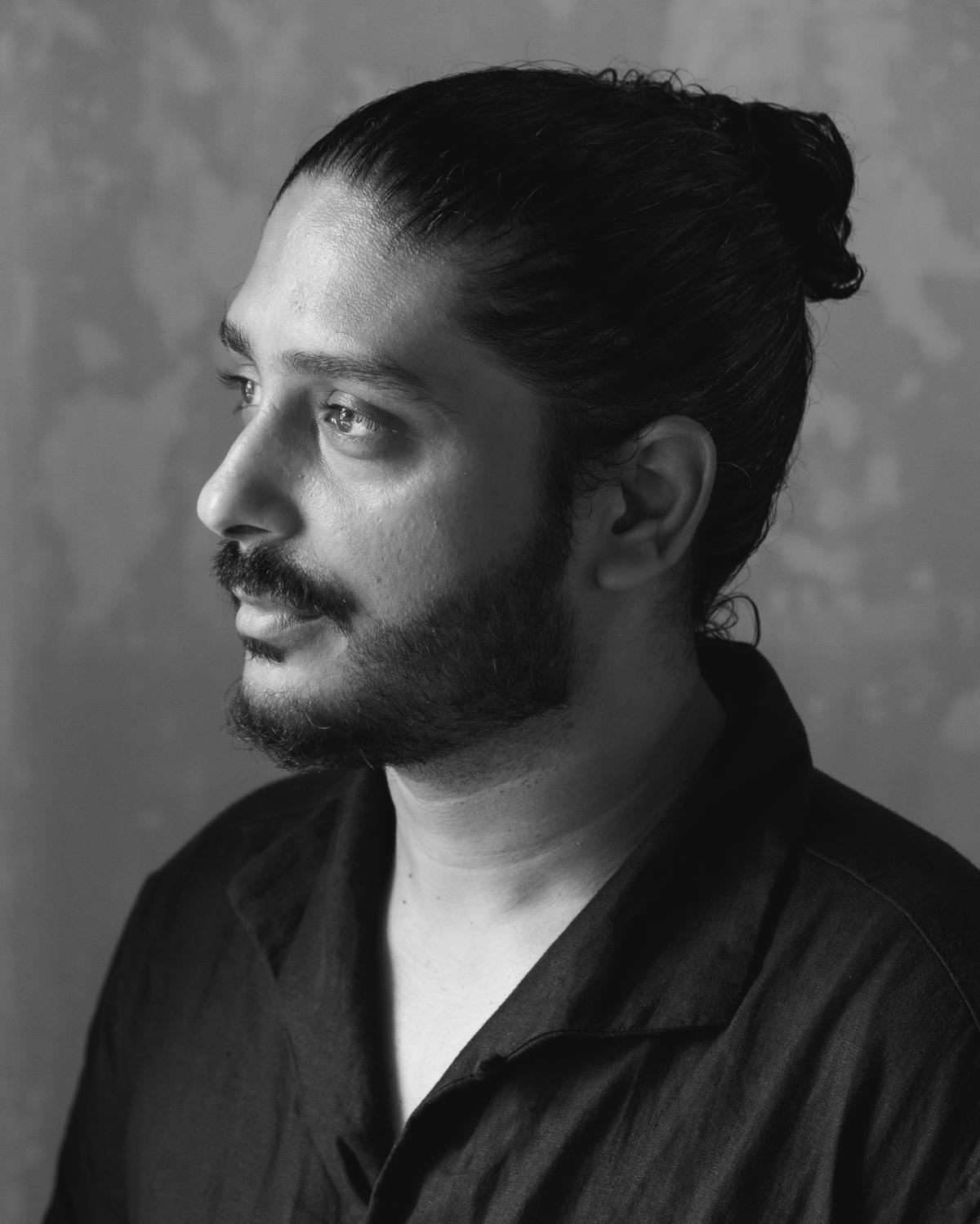
Nabil Rahman
| Photo Credit:
SPECIAL ARRANGEMENT
Nabil’s Cartilage, a series of encyclopedia pages with abstract shapes made by ink spills over it, is a commentary on culture and society, say the artists. “Languages come with their own set of nuances surrounding their origins. And whoever controls language controls society’s narratives,” he explains. The artist attempts to shed light on how information is disseminated in a society and how it is controlled. “My process has been to create distance between an individual entity and its context, without saying much,” says Nabil, whose works have been shown at the Dhaka Art Summit (Bangladesh), Bellas Artes Projects, Manila (Philippines), and so on. He has also worked as a freelance journalist.
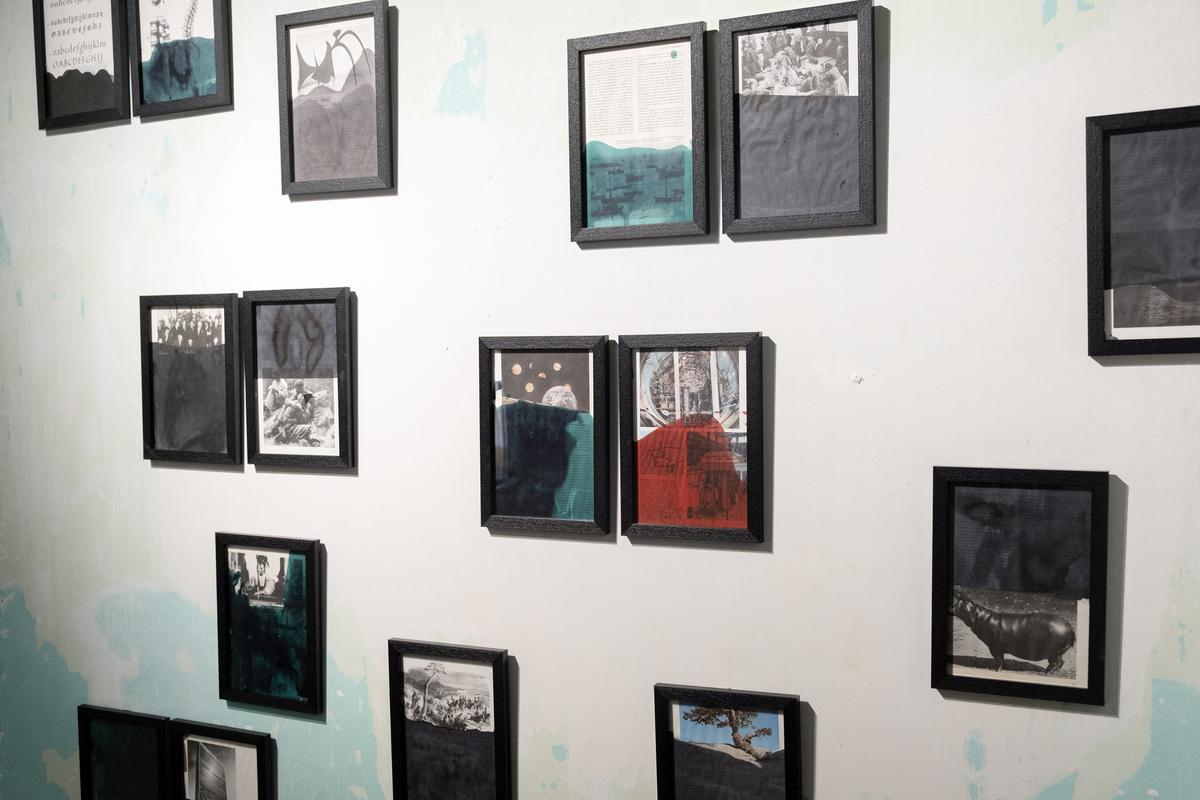
Cartilage from Footnotes exhibition
| Photo Credit:
SPECIAL ARRANGEMENT
In a work titled, Afterimages, he further removes the pictorial elements on paper and works solely with ink spills of red and blue. He identifies this series of works as a move away from text and observing “abstractions from a distance. It is more about being rather than trying to think your way through to a meaning.”
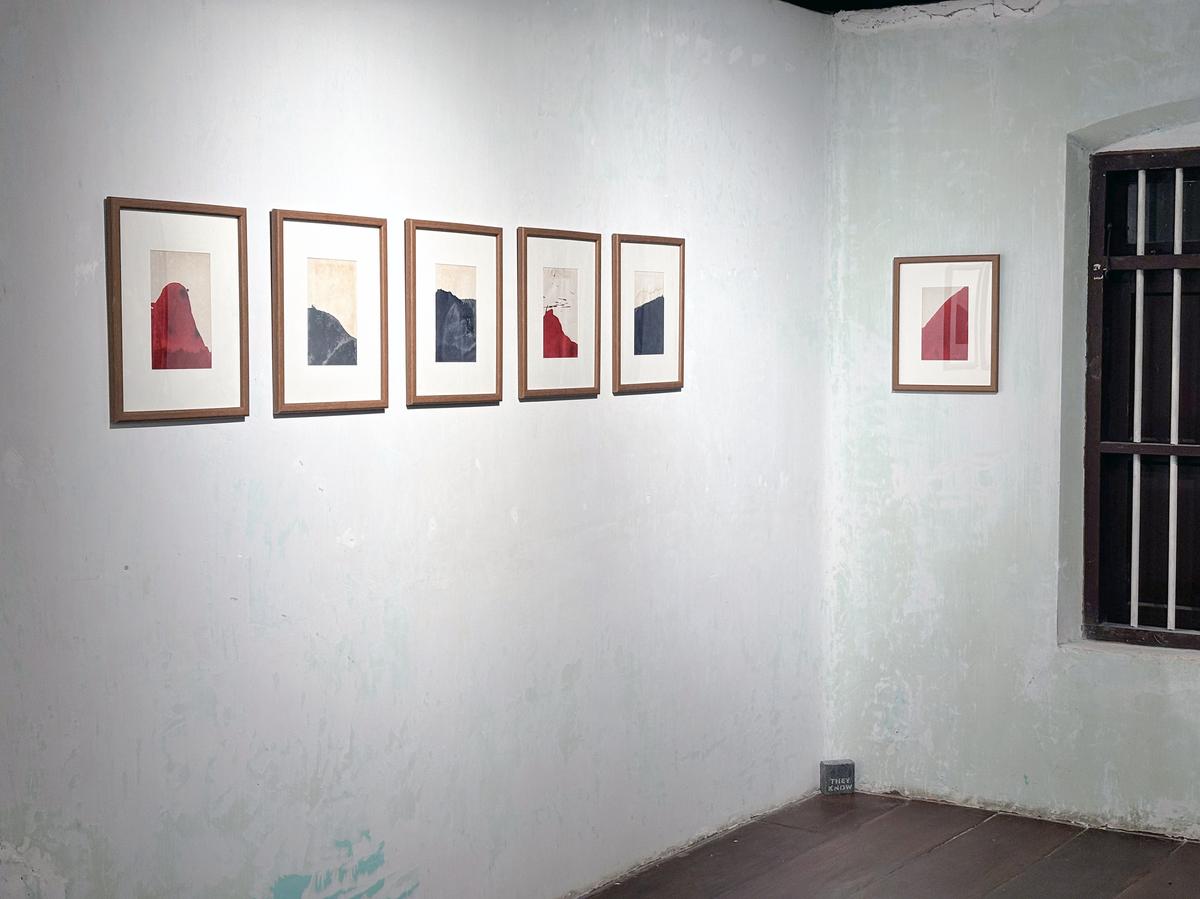
Afterimages from Footnotes exhibition
| Photo Credit:
SPECIAL ARRANGEMENT
“Visually, it’s about eliminating the text. I don’t want to say anything directly; art is meant to evoke thought or an emotion,” says the artist, who moved to the US when he was 10 years old.

Nabil displays multiple works on handmade paper. In two works titled Postulate, he builds a chain of numeric sequences arranged one below the other. “Numbers or words are concrete, but by using them, you create abstractions rather than concrete ideas made with repetition and restructuring. It represents how things are rewritten, and we grow up realising what we knew before was not true.”
His other works include Traces, which are ink impressions of found objects embossed on handmade paper; Aftermath, a slab of granite found by Nabil with blade marks on it, representing patterns or imprints which cannot be replicated; stone inscriptions, and so on.
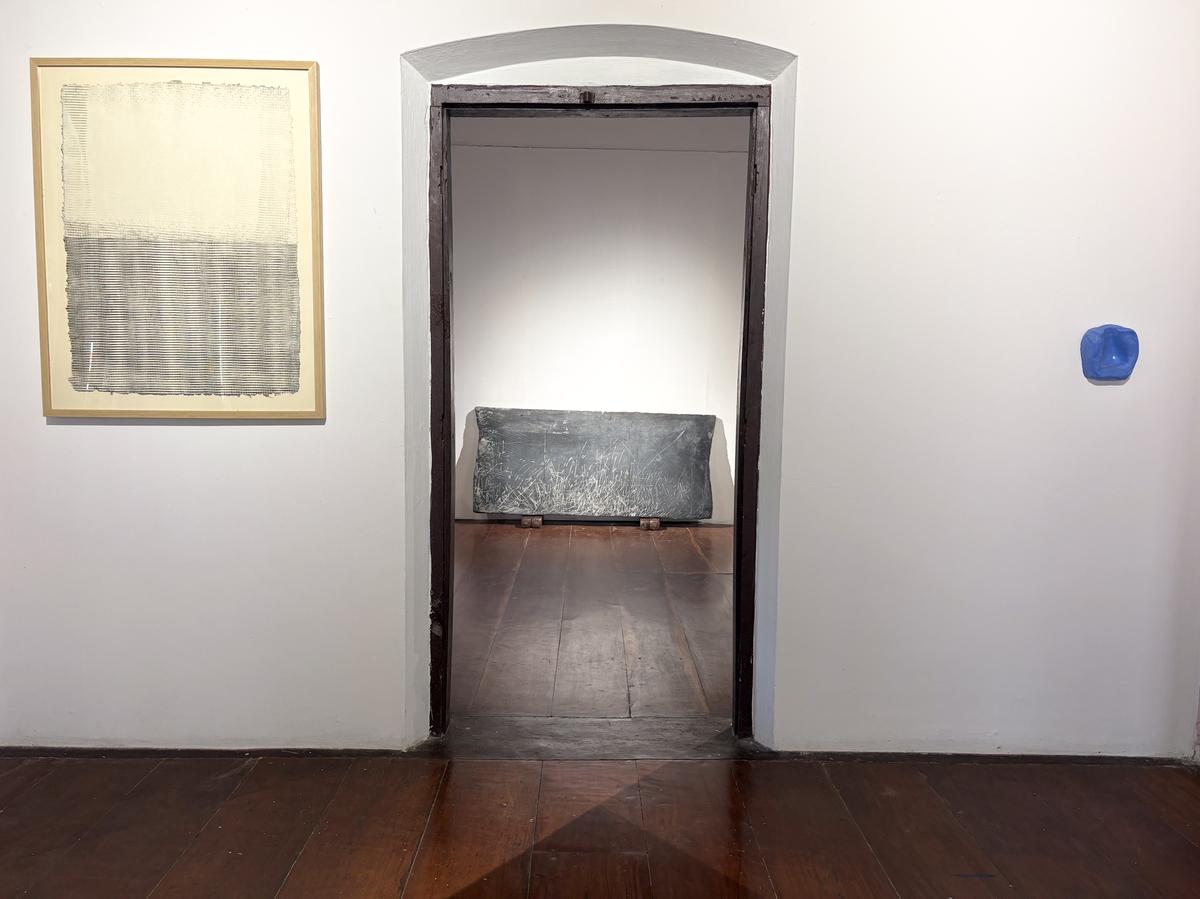
Traces and Aftermath at Footnotes exhibition
| Photo Credit:
SPECIAL ARRANGEMENT
Ayesha’s work attempts to trace the body through impressions and gestures, while drawing attention to the absence of a body, reminding everyone of the transient nature of life.
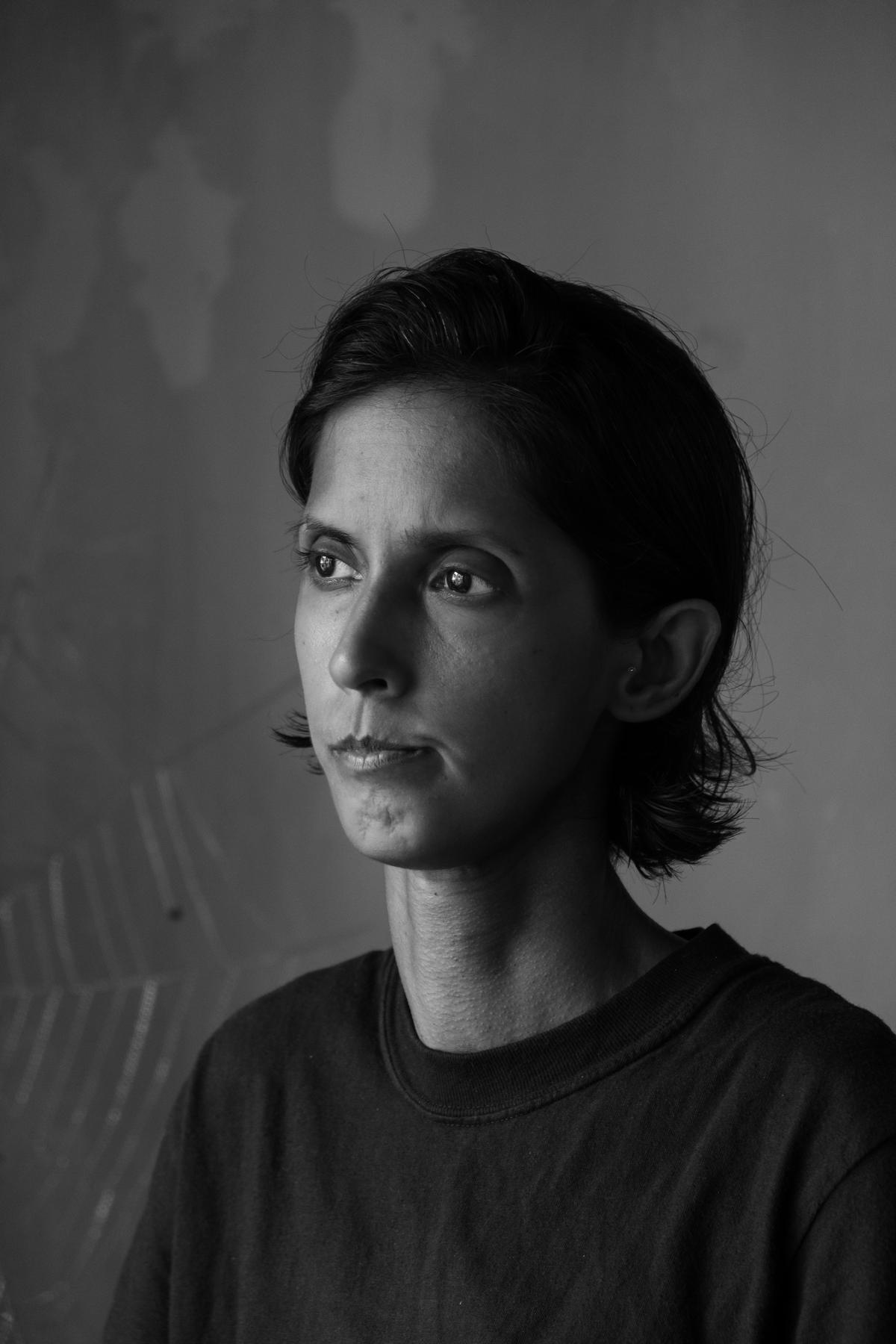
Ayesha Sultana
| Photo Credit:
SPECIAL ARRANGEMENT
Her work Threshold is a pair of suspended legs made of papier-mâché hanging down the walls of the gallery. The piece was made by casting her own legs with the medium and using them to create an impression of a body at the gallery, says Ayesha, whose works have been displayed at the Riyadh Art Week and the San Francisco Museum of Modern Art, among others.
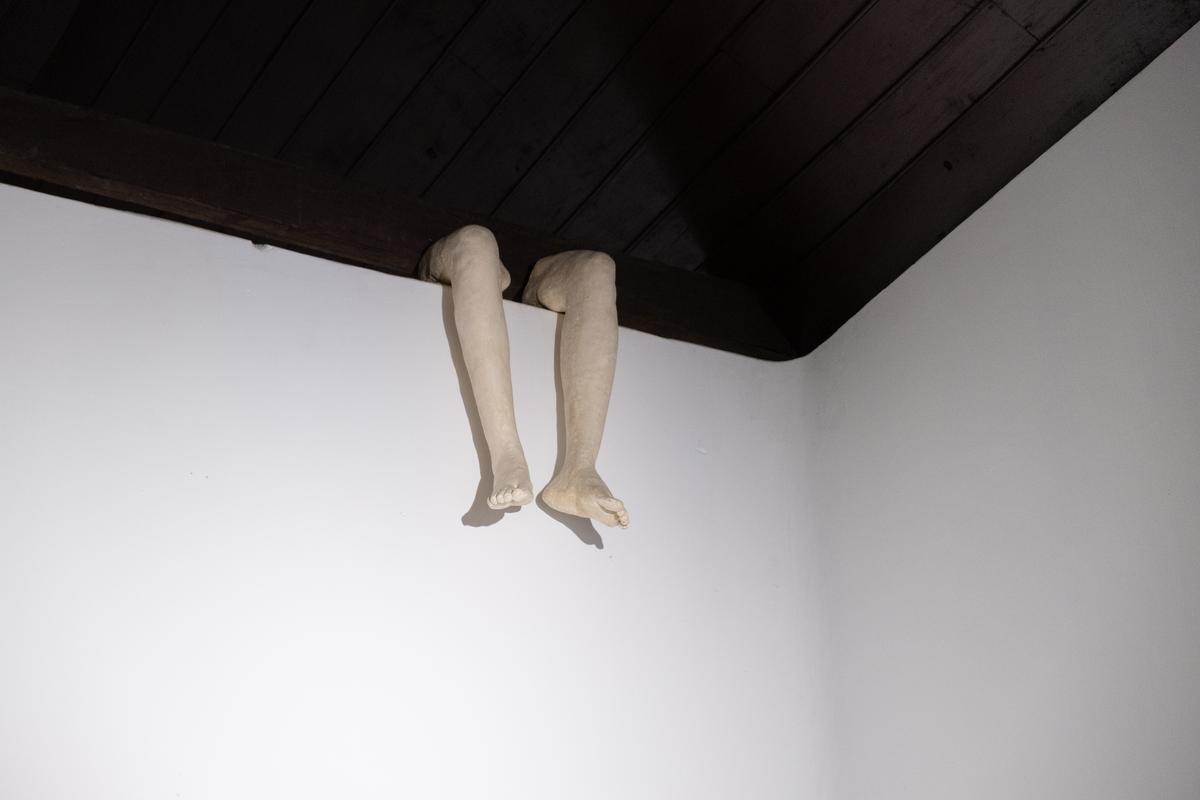
Threshold at Footnotes exhibition
| Photo Credit:
SPECIAL ARRANGEMENT
“The first time I visited the gallery, I had the sensation of a presence there. I imagined a full female body in this space, but then, while I began preparing for the show, we decided to choose the lower body to merely suggest a presence,” says the artist.
Her work Gestures is a series of 12 paintings of abstract ideas, which she finished during her period of residency. Ayesha takes an impressionist approach in using shapes and figures to convey her emotions.
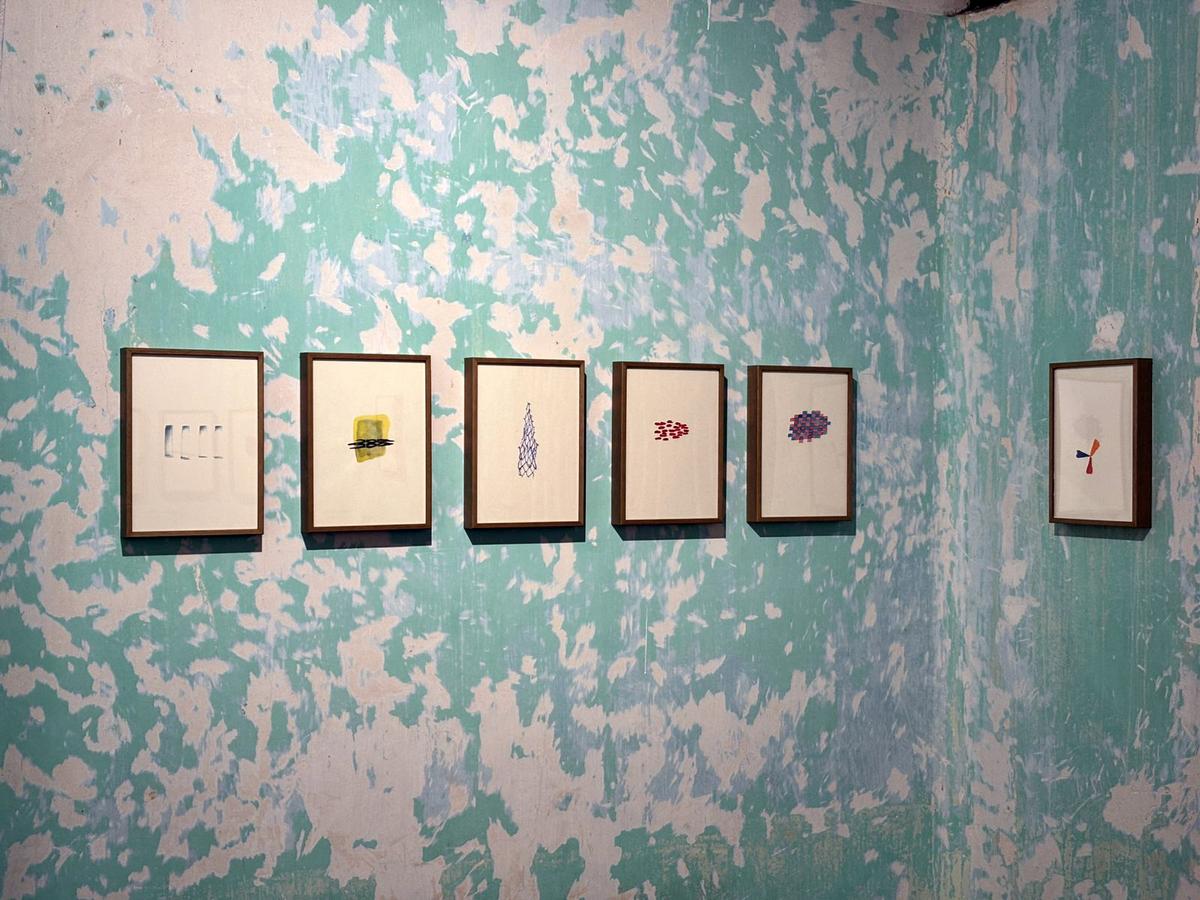
Parts of Gestures series at Footnotes exhibition
| Photo Credit:
SPECIAL ARRANGEMENT
“My work is based on sourcing material and transforming it entirely into something else. It’s how I put myself out there or communicate with the world,” she says.
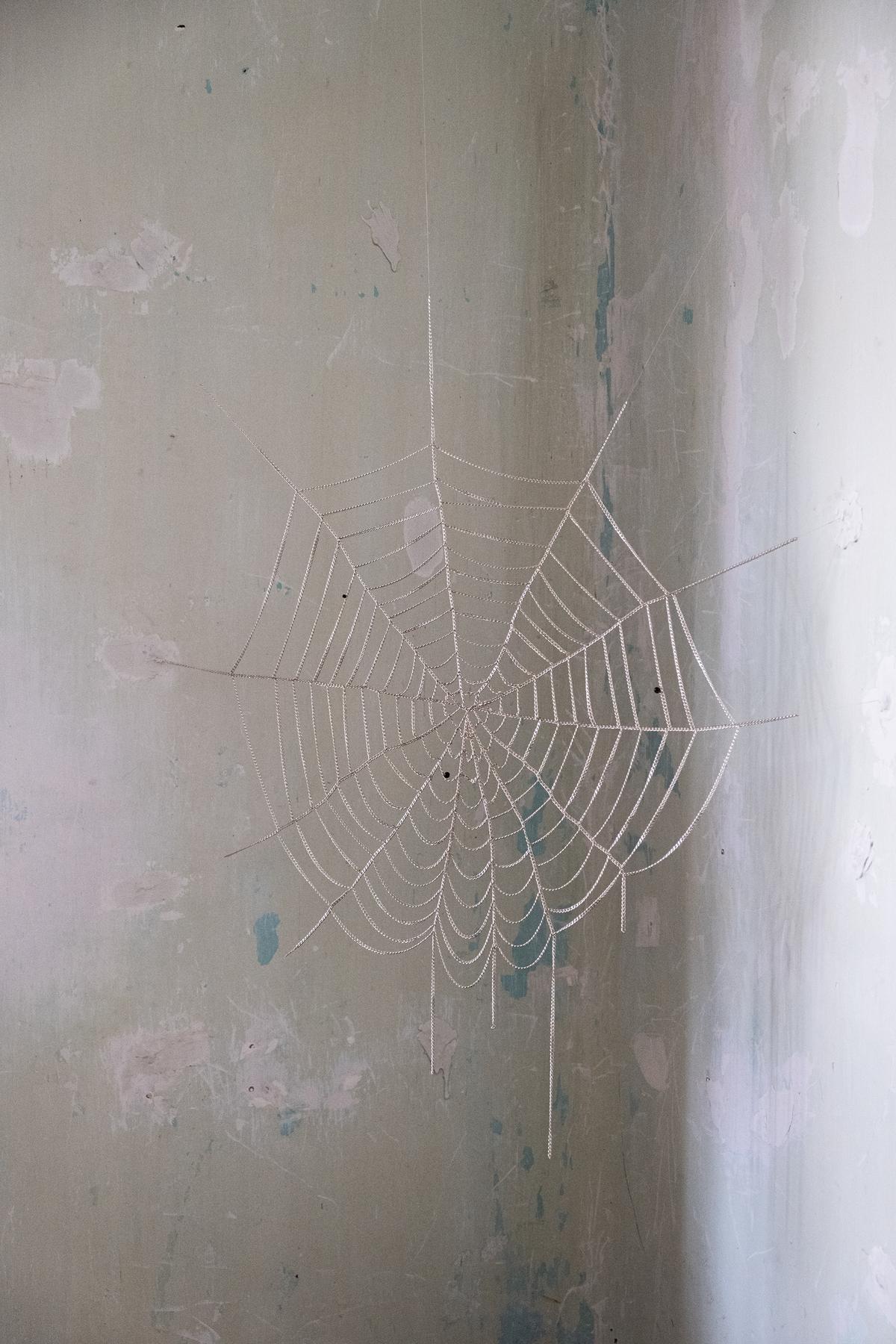
Instinct, web installation at Footnotes exhibition
| Photo Credit:
SPECIAL ARRANGEMENT
Instinct is a web 91 centimeters in diameter, made with silver, wood, and nylon. Ayesha says, “The web suggests different things. Other artists have also worked with using the web, the spider as some kind of symbolic representation. Nature is found a lot in my work.”
Her other works include Fold, an impression of a human body made on Silicone; and Chords, made using copper medium.
Published – October 06, 2025 03:39 pm IST




